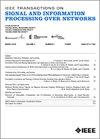E(Q)AGNN-PPIS: Attention Enhanced Equivariant Graph Neural Network for Protein-Protein Interaction Site Prediction
IF 3
3区 计算机科学
Q2 ENGINEERING, ELECTRICAL & ELECTRONIC
IEEE Transactions on Signal and Information Processing over Networks
Pub Date : 2025-07-10
DOI:10.1109/TSIPN.2025.3587396
引用次数: 0
Abstract
Identifying protein binding sites, the specific regions on a protein’s surface where interactions with other molecules occur, is crucial for understanding disease mechanisms and facilitating drug discovery. Although numerous computational techniques have been developed to identify protein binding sites, serving as a valuable screening tool that reduces the time and cost associated with conventional experimental approaches, achieving significant improvements in prediction accuracy remains a formidable challenge. Recent advancements in protein structure prediction, notably through tools like AlphaFold, have made vast numbers of 3-D protein structures available, presenting an opportunity to enhance binding site prediction methods. The availability of detailed 3-D structures has led to the development of Equivariant Graph Neural Networks (GNNs), which can analyze complex spatial relationships in protein structures while maintaining invariance to rotations and translations. However, current equivariant GNN methods still face limitations in fully exploiting the geometric features of protein structures. To address this, we introduce E(Q)AGNN-PPIS, an Equivariant Attention-Enhanced Graph Neural Network designed for predicting protein binding sites by leveraging 3-D protein structure. Our method augments the Equivariant GNN framework by integrating an attention mechanism. This attention component allows the model to focus on the most relevant structural features for binding site prediction, significantly enhancing its ability to capture complex spatial patterns and interactions within the protein structure. Our experimental findings underscore the enhanced performance of E(Q)AGNN-PPIS compared to current state-of-the-art approaches, exhibiting gains of 8.33% in the Area Under the Precision-Recall Curve (AUPRC) and 10% in the Matthews Correlation Coefficient (MCC) across benchmark datasets. Additionally, our method demonstrates fast inference and robust generalization across proteins with varying sequence lengths, outperforming baseline methods.E(Q)AGNN-PPIS:用于蛋白质相互作用位点预测的注意力增强等变图神经网络
确定蛋白质结合位点,即蛋白质表面与其他分子发生相互作用的特定区域,对于理解疾病机制和促进药物发现至关重要。尽管已经开发了许多计算技术来识别蛋白质结合位点,作为一种有价值的筛选工具,减少了与传统实验方法相关的时间和成本,但在预测准确性方面取得重大进展仍然是一个艰巨的挑战。最近在蛋白质结构预测方面的进展,特别是通过像AlphaFold这样的工具,已经使大量的3-D蛋白质结构成为可能,这为增强结合位点预测方法提供了机会。详细的三维结构的可用性导致了等变图神经网络(gnn)的发展,它可以分析蛋白质结构中复杂的空间关系,同时保持旋转和平移的不变性。然而,目前的等变GNN方法在充分利用蛋白质结构的几何特征方面仍然存在局限性。为了解决这个问题,我们引入了E(Q)AGNN-PPIS,这是一种等变注意增强图神经网络,旨在通过利用三维蛋白质结构来预测蛋白质结合位点。我们的方法通过集成注意机制来增强等变GNN框架。这种注意力成分允许模型专注于结合位点预测最相关的结构特征,显著增强其捕获蛋白质结构内复杂空间模式和相互作用的能力。我们的实验结果强调了与当前最先进的方法相比,E(Q)AGNN-PPIS的性能得到了增强,在基准数据集上,精确召回率曲线下的面积(AUPRC)和马修斯相关系数(MCC)分别提高了8.33%和10%。此外,我们的方法在不同序列长度的蛋白质之间表现出快速推理和鲁棒泛化,优于基线方法。
本文章由计算机程序翻译,如有差异,请以英文原文为准。
求助全文
约1分钟内获得全文
求助全文
来源期刊

IEEE Transactions on Signal and Information Processing over Networks
Computer Science-Computer Networks and Communications
CiteScore
5.80
自引率
12.50%
发文量
56
期刊介绍:
The IEEE Transactions on Signal and Information Processing over Networks publishes high-quality papers that extend the classical notions of processing of signals defined over vector spaces (e.g. time and space) to processing of signals and information (data) defined over networks, potentially dynamically varying. In signal processing over networks, the topology of the network may define structural relationships in the data, or may constrain processing of the data. Topics include distributed algorithms for filtering, detection, estimation, adaptation and learning, model selection, data fusion, and diffusion or evolution of information over such networks, and applications of distributed signal processing.
 求助内容:
求助内容: 应助结果提醒方式:
应助结果提醒方式:


